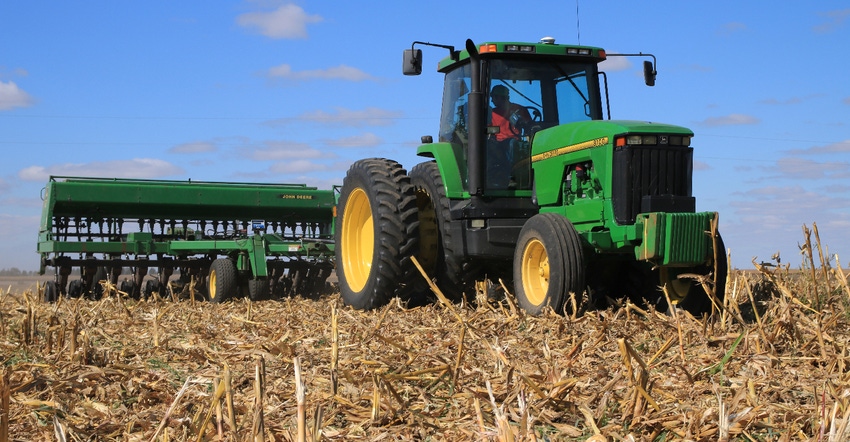
Nutrien recently announced plans to buy credits from farmers for storing carbon between 2021 and 2022.
The company invited other agribusinesses to join in the pilot project at its virtual investor day at the end of November. Demand for carbon credits has doubled since 2017, and leadership is bullish that it will continue, giving farmers a $50-per-acre increase in profits. Assuming carbon sells at a price of $10 to $20 a ton, farmers in the program can expect up to $20 per acre from credit sales and up to $30 per acre in yield improvements, says Nutrien CEO Chuck Magro.
Related: How Illinois farmers are earning money on conservation
“We wanted to make sure this was a rallying cry for the industry,” Magro says. “We can’t do it alone, nor would we ever think about that. We really need the agricultural industry now to step up to tackle climate change. The best way to do that is to create a carbon economy.”
And by a “carbon economy,” he means a carbon market — one that puts dollars behind capturing carbon in soils and returns that value to the farmer. He says it’s important that most of the value from conservation accrue toward farmers for having invested in cover crops, conservation tillage, manure and other practices that store carbon.
Related: Stack conservation revenue with credits
Morgan Stanley Capital International has an A ESG rating for Nutrien. ESG stands for environmental, social and governance. That rating allows investors to comply with their own sustainability goals while still holding a fertilizer company in their portfolios. ESG investing is a major driver for growth in voluntary carbon credit investment by corporations.
To stay in the lead, Nutrien is committing $50 million to preventing emissions from fertilizer production and shipping. The company is also putting money toward the new carbon farming pilot, which will reimburse farmers for conservation measures that store carbon.
Nutrien will roll out that carbon farming pilot program in Illinois and Ohio, and in parts of the Chesapeake Bay and Canada. The company plans to release details on that program and its climate strategy goals in early 2021. Farmers who are interested in participating in the carbon program can get more information online.
“Nutrien has a unique opportunity to be a leader in sustainability across the ag value chain, and our nitrogen business plays a big part in that,” says Raef Sully, executive vice president and CEO of nitrogen and phosphate.
The total carbon market could add up to $100 billion by 2050, according to some estimates, thanks to demand that experts expect to grow by 40 to 100 times by then.
“As the world increasingly focuses on climate action, agriculture can be a major source of those credits, representing up to 30% of the total carbon market by 2050 and offsetting up to 85% of the current emissions from producing crops,” Magro says.
Read more about:
CarbonAbout the Author(s)
You May Also Like




